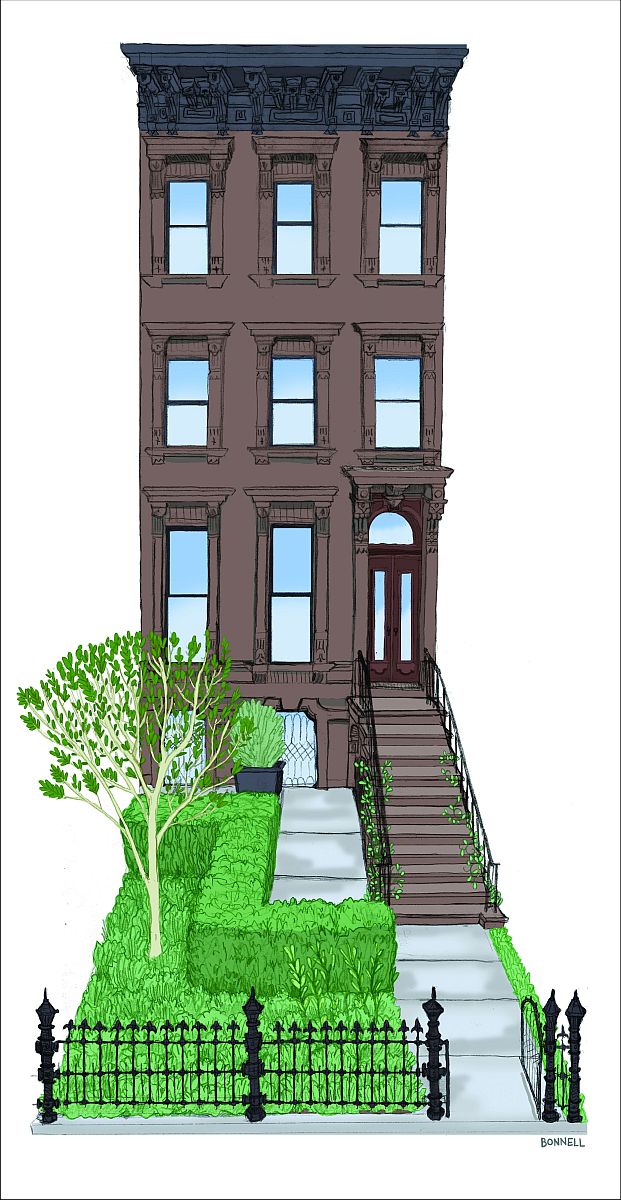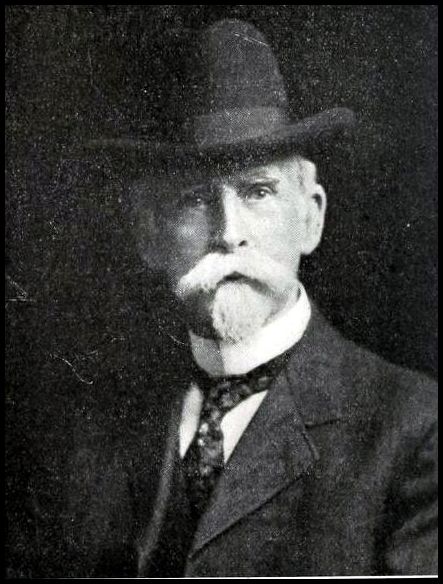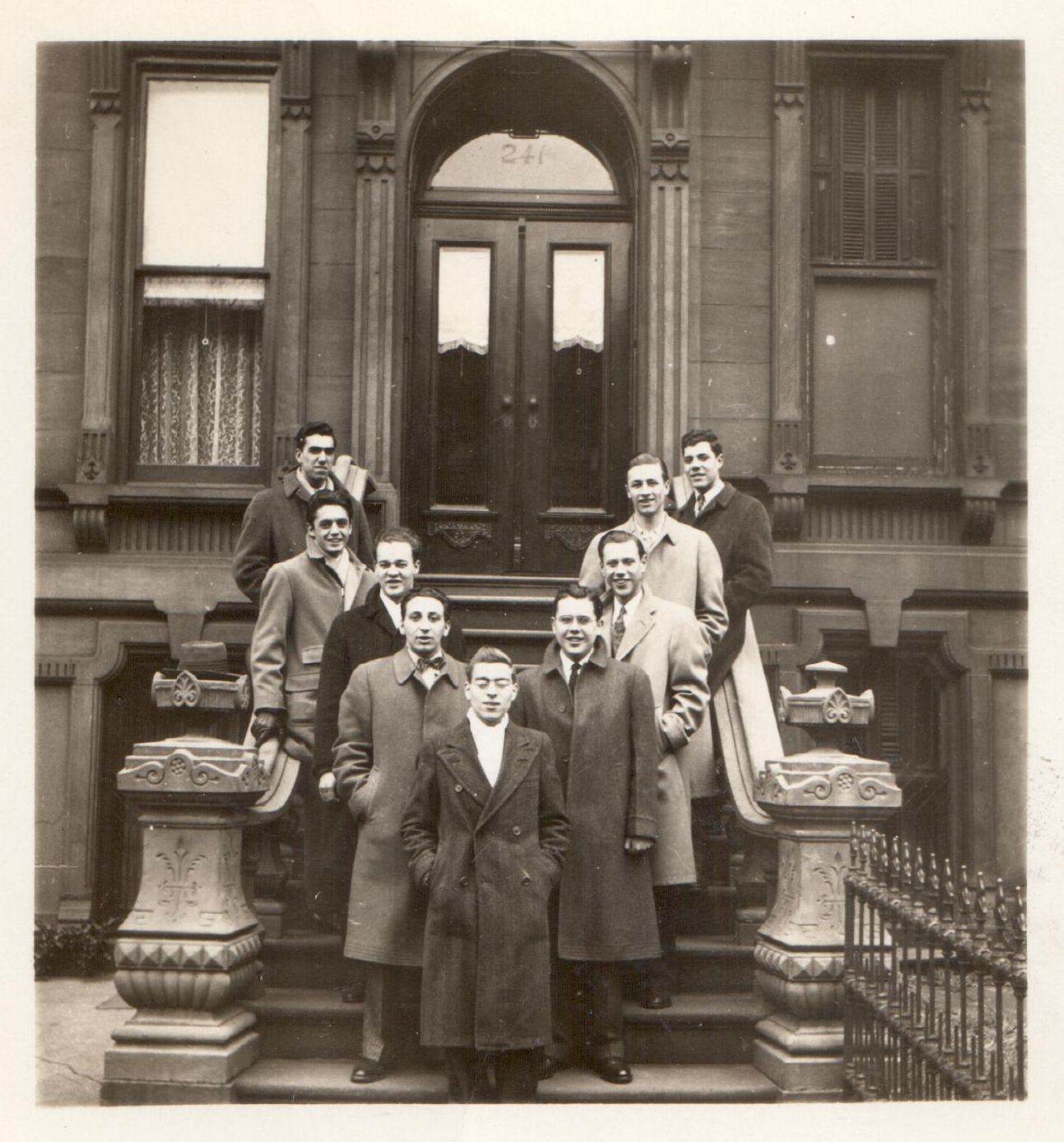Below is a small representation of the hundreds of investigations we’ve performed into our clients’ New York City properties. For each, we’ve produced a House History Book or House History Report. Contact us today to discover the history of YOUR house.
******************************************************************************************************************************** No. 241 Washington Avenue
No. 241 Washington Avenue – In 1879-80, at the southwest corner of Washington and Willoughby avenues, a line of rowhouses was eventually built, bringing the brownstones at Nos. 235-243 Washington Avenue into this world. These brownstones, including No. 241, existed as luxury rentals for the next ten or so years, being occupied by various merchants and owners of manufactories, men with families who sought clean air, quiet, and the easy commute that a life in Brooklyn promised. When the executor of the original owner of these brownstones finally sold them off, one by one, to new owners, No. 241 was snatched up by the wife of a former Confederate cavalryman who would host meetings of the Southern Society and Southern literary readings in his parlor. The following owner, the son-in-law of our cavalryman, was on the board of several steamship companies, and was the president of the main

steamship which played a major role in the United States entering World War I against the Germans. In the mid-1920s, as the neighborhood found itself availed of increased transportation alternatives, it began to attract a more transient lot of boarders. The large old house was suddenly being seen for its potential rent roll as boarding houses. The neighborhood at this time began it long slow descent into a less distinctive place to live. It was during this period that a small family of Italian descent purchased No. 241. They divided the house into a home and a business, raising their four children in the lower section, and offering room and board above to up to 12 female Pratt students at a time.

The early 1950s brought the grand old house into its most tarnished period as it officially became a rooming house offering kitchenette studio apartments and catering to the most transient of society. The house was broken up into rooms with common baths along with individual kitchens or kitchenettes within each. This period at No. 241 would exist for close to 20 years, until the late 1960s when a back-to-the-city craze known as “brownstoning” brought owners of a more esteemed affluence back to the neighborhood. In 1970, one of those brownstoners purchased the multiple dwelling for his 4-member family, with the intent of returning the home to a single family dwelling, which occurred in 1972. When 2007 rolled around, and the original owner and his wife could no longer keep up the house by themselves, they sold the property to its present owners who then entered into a 2-year restoration of the home that would reveal their historic brownstone’s former glory and progress it into the 21st century.
 No. 241 Washington Avenue – In 1879-80, at the southwest corner of Washington and Willoughby avenues, a line of rowhouses was eventually built, bringing the brownstones at Nos. 235-243 Washington Avenue into this world. These brownstones, including No. 241, existed as luxury rentals for the next ten or so years, being occupied by various merchants and owners of manufactories, men with families who sought clean air, quiet, and the easy commute that a life in Brooklyn promised. When the executor of the original owner of these brownstones finally sold them off, one by one, to new owners, No. 241 was snatched up by the wife of a former Confederate cavalryman who would host meetings of the Southern Society and Southern literary readings in his parlor. The following owner, the son-in-law of our cavalryman, was on the board of several steamship companies, and was the president of the main
No. 241 Washington Avenue – In 1879-80, at the southwest corner of Washington and Willoughby avenues, a line of rowhouses was eventually built, bringing the brownstones at Nos. 235-243 Washington Avenue into this world. These brownstones, including No. 241, existed as luxury rentals for the next ten or so years, being occupied by various merchants and owners of manufactories, men with families who sought clean air, quiet, and the easy commute that a life in Brooklyn promised. When the executor of the original owner of these brownstones finally sold them off, one by one, to new owners, No. 241 was snatched up by the wife of a former Confederate cavalryman who would host meetings of the Southern Society and Southern literary readings in his parlor. The following owner, the son-in-law of our cavalryman, was on the board of several steamship companies, and was the president of the main steamship which played a major role in the United States entering World War I against the Germans. In the mid-1920s, as the neighborhood found itself availed of increased transportation alternatives, it began to attract a more transient lot of boarders. The large old house was suddenly being seen for its potential rent roll as boarding houses. The neighborhood at this time began it long slow descent into a less distinctive place to live. It was during this period that a small family of Italian descent purchased No. 241. They divided the house into a home and a business, raising their four children in the lower section, and offering room and board above to up to 12 female Pratt students at a time.
steamship which played a major role in the United States entering World War I against the Germans. In the mid-1920s, as the neighborhood found itself availed of increased transportation alternatives, it began to attract a more transient lot of boarders. The large old house was suddenly being seen for its potential rent roll as boarding houses. The neighborhood at this time began it long slow descent into a less distinctive place to live. It was during this period that a small family of Italian descent purchased No. 241. They divided the house into a home and a business, raising their four children in the lower section, and offering room and board above to up to 12 female Pratt students at a time.  The early 1950s brought the grand old house into its most tarnished period as it officially became a rooming house offering kitchenette studio apartments and catering to the most transient of society. The house was broken up into rooms with common baths along with individual kitchens or kitchenettes within each. This period at No. 241 would exist for close to 20 years, until the late 1960s when a back-to-the-city craze known as “brownstoning” brought owners of a more esteemed affluence back to the neighborhood. In 1970, one of those brownstoners purchased the multiple dwelling for his 4-member family, with the intent of returning the home to a single family dwelling, which occurred in 1972. When 2007 rolled around, and the original owner and his wife could no longer keep up the house by themselves, they sold the property to its present owners who then entered into a 2-year restoration of the home that would reveal their historic brownstone’s former glory and progress it into the 21st century.
The early 1950s brought the grand old house into its most tarnished period as it officially became a rooming house offering kitchenette studio apartments and catering to the most transient of society. The house was broken up into rooms with common baths along with individual kitchens or kitchenettes within each. This period at No. 241 would exist for close to 20 years, until the late 1960s when a back-to-the-city craze known as “brownstoning” brought owners of a more esteemed affluence back to the neighborhood. In 1970, one of those brownstoners purchased the multiple dwelling for his 4-member family, with the intent of returning the home to a single family dwelling, which occurred in 1972. When 2007 rolled around, and the original owner and his wife could no longer keep up the house by themselves, they sold the property to its present owners who then entered into a 2-year restoration of the home that would reveal their historic brownstone’s former glory and progress it into the 21st century.